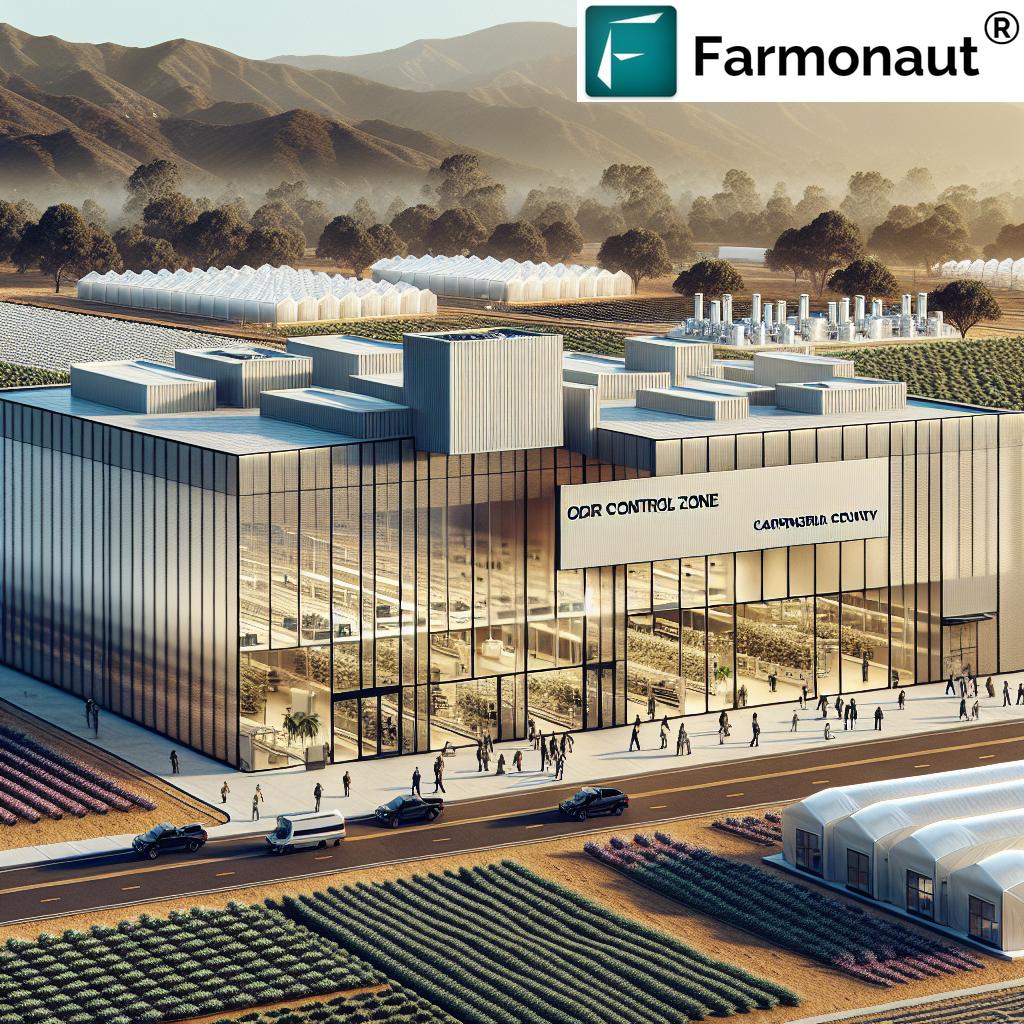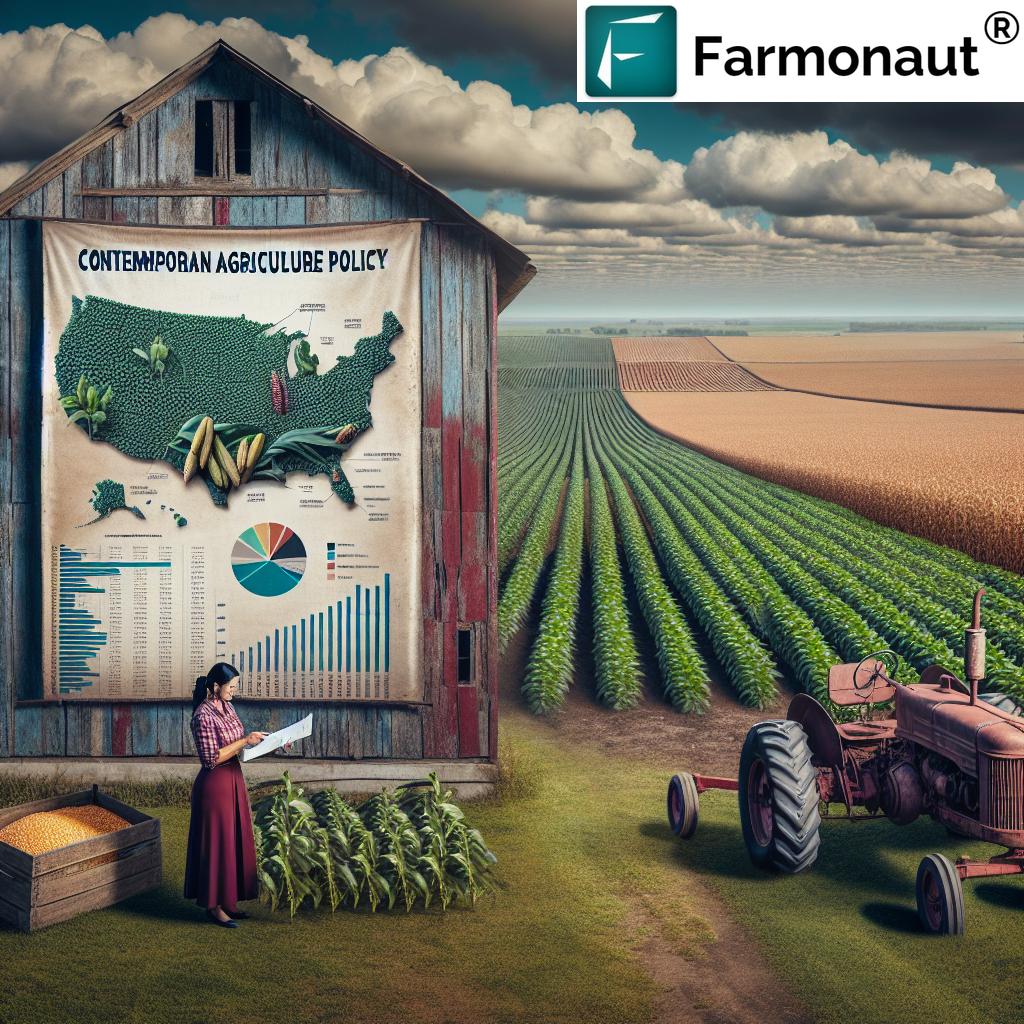Carpinteria’s Cannabis Conundrum: Balancing Industry Growth with Community Concerns in California’s Coastal Valley
“Carpinteria’s proposed cannabis processing facility spans 25,400 square feet, sparking debate on urban cultivation and odor control.”
In the picturesque coastal valley of Carpinteria, California, a contentious debate is unfolding that encapsulates the challenges facing the burgeoning cannabis industry in urban areas. At the heart of this controversy is a proposed 25,400 square-foot cannabis processing building, part of an existing greenhouse operation, which has reignited discussions about cannabis greenhouse regulations, odor control for cannabis farms, and the delicate balance between industry growth and community well-being.
As we delve into this complex issue, we’ll explore the various facets of urban cannabis cultivation challenges, the evolving landscape of cannabis zoning permits, and the impact of commercial cannabis operations on local communities. This saga serves as a microcosm of the larger struggles facing the cannabis industry in California and beyond, highlighting the need for innovative solutions and thoughtful regulation.
The Carpinteria Cannabis Landscape
Carpinteria, a small coastal city in Santa Barbara County, has become an unlikely epicenter for cannabis cultivation in California. The region’s mild climate and existing greenhouse infrastructure, previously used for cut flower production, have made it an attractive location for cannabis growers. However, this rapid industry growth has not been without its challenges.

The proposed processing building at the center of the current debate is being developed by Graham Farrar, co-owner of G&K Produce and K&G Flowers. This operation, located at 3561 Foothill Road, includes eight acres of cannabis greenhouses and was among the first to receive a zoning permit for commercial cannabis operations in the Carpinteria Valley back in 2019.
Community Concerns and Odor Issues
The rapid expansion of cannabis operations in Carpinteria has not been without controversy. A local citizen group, Concerned Carpinterians, has been at the forefront of advocating for stricter cannabis regulations. Their primary concerns revolve around the overwhelming odor emanating from cannabis greenhouses and the perceived negative impact on quality of life for residents.
The scale of the odor problem is significant, with over 900 complaints filed with the county. In one extreme case, a single homeowner submitted 595 complaints, citing “foul odors” that allegedly cause health problems such as migraines and respiratory difficulties. This highlights the urgent need for effective odor control measures in cannabis cultivation.
Regulatory Challenges and Evolving Solutions
“California’s evolving cannabis regulations now mandate advanced odor control measures like carbon filters for urban cultivation operations.”
The ongoing saga in Carpinteria underscores the complexities of regulating the cannabis industry in urban areas. Santa Barbara County, like many jurisdictions in California, is grappling with how to balance the economic benefits of the cannabis industry with the concerns of local residents.
In response to the persistent odor issues, the county is developing new regulations that would require all cannabis growers, including operations like Farrar’s, to implement advanced odor control measures within the next year. These measures could include the installation of carbon scrubbers, a technology already in use at some facilities like Glass House Farms.
The proposed processing building, if approved, would incorporate state-of-the-art odor control technology to mitigate the impact on the surrounding community. This represents a significant step forward in addressing one of the most pressing concerns related to urban cannabis cultivation.
Design Review and Zoning Considerations
The design review process for Farrar’s proposed processing building has been fraught with challenges. The building, standing at 21 feet tall and located at the rear of the property, has faced scrutiny not only for its potential odor impact but also for concerns about the overall density of structures on the site.
With the proposed additions, the structures would cover approximately 63% of the parcel, approaching the maximum allowed under current zoning regulations. This has raised questions about the appropriate scale of cannabis operations in urban and semi-urban areas, and whether existing zoning laws are adequate to address the unique challenges posed by this industry.
The Broader Context: Cannabis Industry in California
The situation in Carpinteria is emblematic of the larger challenges facing the cannabis industry in California. As one of the pioneers in cannabis legalization, California has been at the forefront of developing regulations for this rapidly growing sector. However, the state’s regulatory framework is still evolving, with local jurisdictions often taking the lead in addressing specific community concerns.

The challenges faced in Carpinteria highlight several key issues that are relevant to cannabis cultivation across the state:
- Odor Control: As cannabis cultivation moves closer to urban areas, effective odor control becomes paramount. The development of new technologies and best practices for odor mitigation is likely to be a major focus for the industry in the coming years.
- Zoning and Land Use: The cannabis industry’s rapid growth is testing the limits of existing zoning laws and land use regulations. Many jurisdictions are finding that they need to update their policies to specifically address cannabis cultivation and processing.
- Community Relations: The success of cannabis operations in urban and semi-urban areas will depend heavily on their ability to coexist harmoniously with local communities. This requires not only technical solutions to issues like odor control but also proactive community engagement and transparency.
- Economic Impact: While the cannabis industry offers significant economic benefits, including job creation and tax revenue, these must be balanced against potential negative impacts on property values and quality of life for nearby residents.
Innovative Solutions for Cannabis Cultivation
As the cannabis industry continues to evolve, there is a growing need for innovative solutions to address the challenges of urban cultivation. This is where companies like Farmonaut come into play, offering advanced technologies that can help improve efficiency and sustainability in agriculture, including cannabis cultivation.
While Farmonaut’s services are not specifically tailored to cannabis, many of its technologies could be applicable to this sector. For instance, its satellite-based crop health monitoring could help cannabis growers optimize their operations and reduce resource usage. Similarly, the company’s AI-driven advisory system could provide valuable insights for cannabis cultivators looking to improve their practices.
For more information on Farmonaut’s agricultural solutions, you can visit their web app or explore their API for developers.
Comparative Analysis of Cannabis Cultivation Regulations
To better understand how different jurisdictions are approaching cannabis cultivation, let’s look at a comparative analysis of regulations across several California counties:
| County | Max Greenhouse Size (sq ft) | Odor Control Requirements | Min Distance from Residential Areas (ft) | Processing Facility Regulations |
|---|---|---|---|---|
| Santa Barbara (Carpinteria) | 22,000 | Carbon filtration required | 1,000 | Subject to design review |
| Humboldt | 10,000 | Odor control plan required | 600 | Limited to 5,000 sq ft |
| Monterey | 25,000 | Best available control technology | 1,500 | Must be on-site |
| Mendocino | 10,000 | Case-by-case evaluation | 1,000 | Restricted to agricultural zones |
| San Luis Obispo | 15,000 | Sealed structures required | 1,000 | Conditional use permit required |
This table illustrates the varying approaches to cannabis regulation across different California counties. Santa Barbara County, which includes Carpinteria, allows for relatively large greenhouse operations but has implemented strict odor control requirements in response to community concerns.
The Future of Urban Cannabis Cultivation
As we look to the future of cannabis cultivation in urban areas, several key trends and challenges emerge:
- Technological Advancements: The development of more effective odor control technologies will be crucial for the industry’s growth in urban areas. This may include not only improvements in filtration systems but also the development of less odorous cannabis strains.
- Regulatory Evolution: We can expect to see continued refinement of cannabis regulations at both the state and local levels. This may include more specific guidelines for odor control, energy usage, and water conservation in cannabis operations.
- Community Engagement: Successful cannabis operations will likely need to prioritize community relations, potentially including educational initiatives and transparent communication about their practices and impact.
- Sustainability Focus: As the industry matures, there will likely be an increased emphasis on sustainable cultivation practices. This could include the adoption of renewable energy sources, water-efficient irrigation systems, and organic pest control methods.
For those interested in staying updated on the latest agricultural technologies, including those that could benefit cannabis cultivation, consider exploring Farmonaut’s offerings:
Balancing Industry Growth and Community Concerns
The ongoing saga in Carpinteria serves as a valuable case study in the challenges of integrating a new and rapidly growing industry into established communities. As the cannabis industry continues to evolve, finding the right balance between economic growth and community well-being will be crucial.
Key considerations for achieving this balance include:
- Adaptive Regulation: Regulatory frameworks need to be flexible enough to adapt to new technologies and changing community needs.
- Collaborative Approach: Fostering dialogue between industry representatives, community members, and local officials can help identify mutually beneficial solutions.
- Investment in Research: Continued research into the environmental and health impacts of cannabis cultivation can inform better policies and practices.
- Economic Analysis: A comprehensive understanding of the economic impacts of the cannabis industry, both positive and negative, can help communities make informed decisions about industry growth.
Conclusion
The cannabis conundrum in Carpinteria exemplifies the complex challenges facing the industry as it continues to grow and evolve. As urban cannabis cultivation becomes more prevalent, communities across California and beyond will need to grapple with similar issues of odor control, zoning, and community impact.
The resolution of these challenges will require a multifaceted approach, combining innovative technologies, thoughtful regulation, and proactive community engagement. As the industry matures, we can expect to see the development of best practices that allow cannabis cultivation to coexist harmoniously with urban and suburban communities.
Ultimately, the success of the cannabis industry in urban areas will depend on its ability to address community concerns while delivering economic benefits. The lessons learned from Carpinteria’s experience will undoubtedly inform this process, helping to shape the future of cannabis cultivation in California and beyond.
FAQ Section
- Q: What are the main concerns of Carpinteria residents regarding cannabis cultivation?
A: The primary concerns include overwhelming odor from cannabis greenhouses, potential health impacts, and the density of cannabis operations in the area. - Q: How is Santa Barbara County addressing odor control issues?
A: The county is developing new regulations that would require all cannabis growers to implement advanced odor control measures, such as carbon filtration systems, within the next year. - Q: What is the size of the proposed cannabis processing building in Carpinteria?
A: The proposed building is 25,400 square feet and would be 21 feet tall. - Q: How do cannabis cultivation regulations vary across California counties?
A: Regulations vary significantly, with differences in maximum greenhouse sizes, odor control requirements, minimum distances from residential areas, and processing facility regulations. - Q: What role can technology play in addressing urban cannabis cultivation challenges?
A: Technology can help with more effective odor control, optimized resource management, and improved monitoring of environmental impacts. Companies like Farmonaut offer solutions that, while not specific to cannabis, could be applied to improve cultivation practices.
Earn With Farmonaut: Affiliate Program
Earn 20% recurring commission with Farmonaut’s affiliate program by sharing your promo code and helping farmers save 10%. Onboard 10 Elite farmers monthly to earn a minimum of $148,000 annually—start now and grow your income!



















